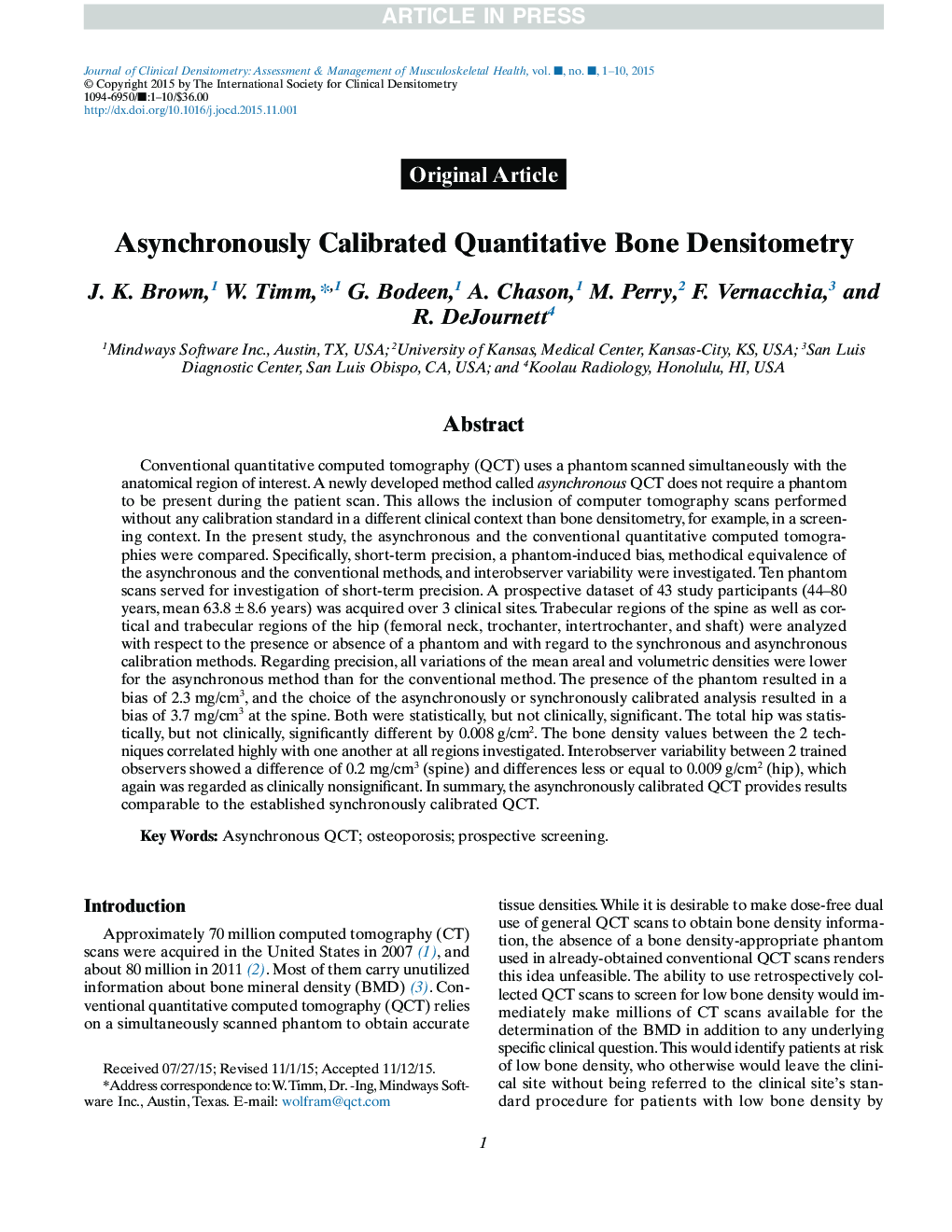| کد مقاله | کد نشریه | سال انتشار | مقاله انگلیسی | نسخه تمام متن |
|---|---|---|---|---|
| 8723104 | 1589616 | 2017 | 10 صفحه PDF | دانلود رایگان |
عنوان انگلیسی مقاله ISI
Asynchronously Calibrated Quantitative Bone Densitometry
ترجمه فارسی عنوان
ضریب سنجی اندکی استخوان به طور غیرمستقیم کالیبراسیون شده است
دانلود مقاله + سفارش ترجمه
دانلود مقاله ISI انگلیسی
رایگان برای ایرانیان
کلمات کلیدی
موضوعات مرتبط
علوم پزشکی و سلامت
پزشکی و دندانپزشکی
غدد درون ریز، دیابت و متابولیسم
چکیده انگلیسی
Conventional quantitative computed tomography (QCT) uses a phantom scanned simultaneously with the anatomical region of interest. A newly developed method called asynchronous QCT does not require a phantom to be present during the patient scan. This allows the inclusion of computer tomography scans performed without any calibration standard in a different clinical context than bone densitometry, for example, in a screening context. In the present study, the asynchronous and the conventional quantitative computed tomographies were compared. Specifically, short-term precision, a phantom-induced bias, methodical equivalence of the asynchronous and the conventional methods, and interobserver variability were investigated. Ten phantom scans served for investigation of short-term precision. A prospective dataset of 43 study participants (44-80 years, mean 63.8â±â8.6 years) was acquired over 3 clinical sites. Trabecular regions of the spine as well as cortical and trabecular regions of the hip (femoral neck, trochanter, intertrochanter, and shaft) were analyzed with respect to the presence or absence of a phantom and with regard to the synchronous and asynchronous calibration methods. Regarding precision, all variations of the mean areal and volumetric densities were lower for the asynchronous method than for the conventional method. The presence of the phantom resulted in a bias of 2.3âmg/cm3, and the choice of the asynchronously or synchronously calibrated analysis resulted in a bias of 3.7âmg/cm3 at the spine. Both were statistically, but not clinically, significant. The total hip was statistically, but not clinically, significantly different by 0.008âg/cm2. The bone density values between the 2 techniques correlated highly with one another at all regions investigated. Interobserver variability between 2 trained observers showed a difference of 0.2âmg/cm3 (spine) and differences less or equal to 0.009âg/cm2 (hip), which again was regarded as clinically nonsignificant. In summary, the asynchronously calibrated QCT provides results comparable to the established synchronously calibrated QCT.
ناشر
Database: Elsevier - ScienceDirect (ساینس دایرکت)
Journal: Journal of Clinical Densitometry - Volume 20, Issue 2, AprilâJune 2017, Pages 216-225
Journal: Journal of Clinical Densitometry - Volume 20, Issue 2, AprilâJune 2017, Pages 216-225
نویسندگان
J.K. Brown, W. Timm, G. Bodeen, A. Chason, M. Perry, F. Vernacchia, R. DeJournett,
